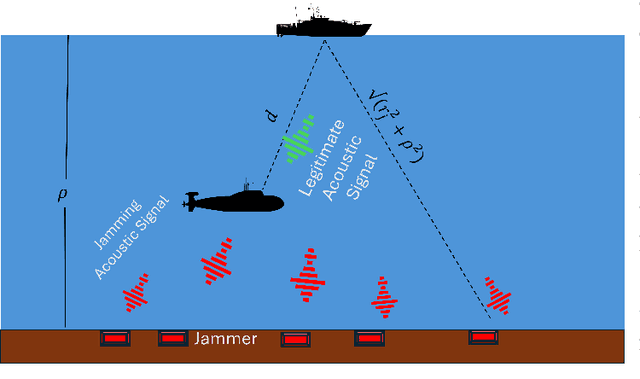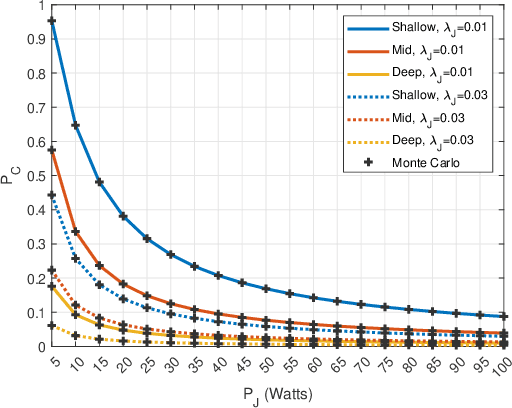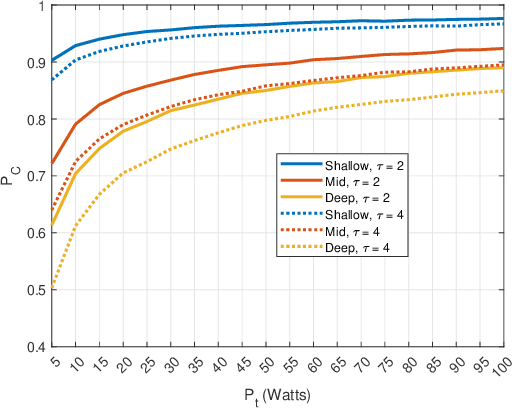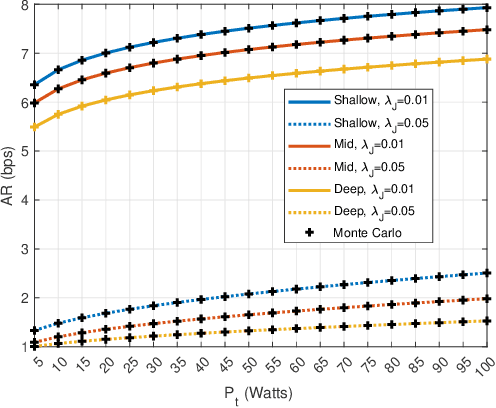Performance Analysis of Underwater Acoustic Channel Amid Jamming by Random Jammers
Paper and Code
May 05, 2024



Underwater communication networks are increasingly popularized by various important maritime applications. However, this also leads to an increased threat landscape. This letter presents the first study that considers jamming attacks by random jammers present in the surroundings of legitimate transceivers in underwater acoustic communication systems. We investigate the impact of jamming attacks on various performance parameters of the legitimate underwater acoustic communication link. In particular, we investigate the legitimate link using stochastic geometry for important performance parameters, namely coverage probability, average rate, and energy efficiency of the link between two legitimate nodes, i.e., underwater and surface nodes. We then derive and present tractable expressions for these performance parameters. Finally, we performed a Monte Carlo simulation to validate our analysis. We plot the performance metrics against the transmit power, and jamming power for different intensities of the jammers in shallow, mid, and deep water scenarios. Results reveal that on average, jamming in deep water has a relatively high impact on the performance of legitimate link than in shallow water.
 Add to Chrome
Add to Chrome Add to Firefox
Add to Firefox Add to Edge
Add to Edge